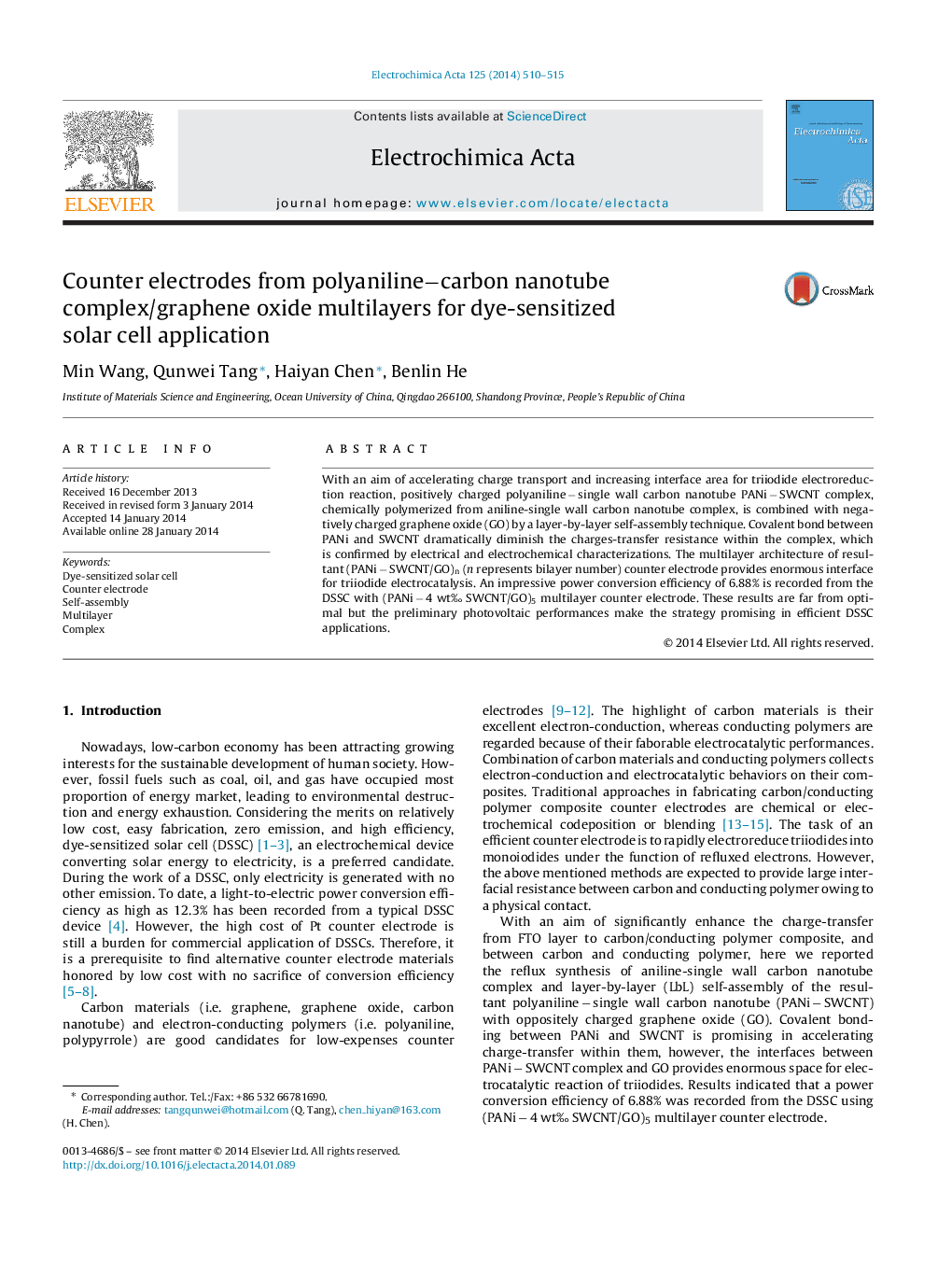| Article ID | Journal | Published Year | Pages | File Type |
|---|---|---|---|---|
| 186255 | Electrochimica Acta | 2014 | 6 Pages |
•PANi-SWCNT complexes are synthesized by a reflux method for rapid charge-transfer.•(PANi − SWCNT/GO)n multilayer CEs are fabricated by a self-assembly technique.•The charge-transfer ability toward iodide reduction is significantly enhanced.•A conversion efficiency of 6.88% is obtained in its DSSC.•The strategy provides new opportunities for efficient DSSC assembly.
With an aim of accelerating charge transport and increasing interface area for triiodide electroreduction reaction, positively charged polyaniline − single wall carbon nanotube PANi − SWCNT complex, chemically polymerized from aniline-single wall carbon nanotube complex, is combined with negatively charged graphene oxide (GO) by a layer-by-layer self-assembly technique. Covalent bond between PANi and SWCNT dramatically diminish the charges-transfer resistance within the complex, which is confirmed by electrical and electrochemical characterizations. The multilayer architecture of resultant (PANi − SWCNT/GO)n (n represents bilayer number) counter electrode provides enormous interface for triiodide electrocatalysis. An impressive power conversion efficiency of 6.88% is recorded from the DSSC with (PANi − 4 wt‰ SWCNT/GO)5 multilayer counter electrode. These results are far from optimal but the preliminary photovoltaic performances make the strategy promising in efficient DSSC applications.
Graphical abstractFigure optionsDownload full-size imageDownload as PowerPoint slide
